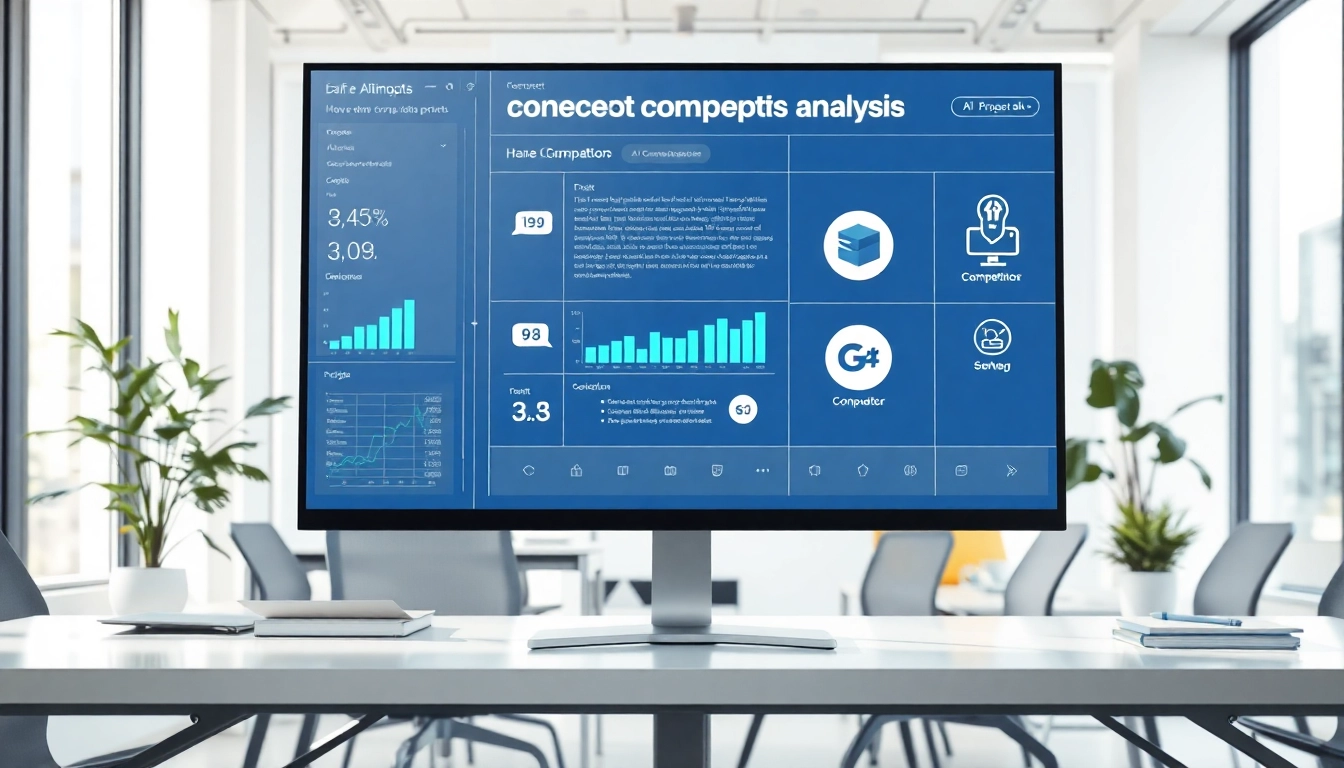Understanding the Importance of AI Prompts for Competitor Analysis
In today’s competitive business landscape, understanding your rivals and their strategies can significantly influence your own success. AI prompts for competitor analysis have emerged as invaluable tools, harnessing the power of artificial intelligence to streamline and enhance the analytical process. By utilizing ai prompts for competitor analysis, businesses can uncover deep insights that inform strategic decisions, optimize marketing efforts, and identify market gaps that may not be immediately visible through traditional analysis methods.
What Are AI Prompts?
AI prompts are specific instructions or questions designed to elicit informative responses from AI models like ChatGPT. These prompts guide the AI in analyzing large data sets, summarizing complex information, or generating insights based on input parameters. By using carefully crafted prompts, businesses can extract valuable intelligence from competitor data, market trends, and consumer behavior.
The Role of Competitor Analysis in Business Strategy
Competitor analysis is a fundamental aspect of strategic planning. It involves researching and evaluating the strategies, strengths, and weaknesses of competitors within the market. Through effective competitor analysis, businesses can identify areas for improvement, anticipate market shifts, and leverage competitors’ successes and failures to guide their own strategies. By integrating AI prompts into this process, organizations can ensure a more thorough and nuanced understanding of the competitive landscape.
How AI Enhances Traditional Analysis Methods
Traditional methods of competitor analysis often rely on manual research, which can be time-consuming and prone to human error. AI enhances these methods by providing speed, efficiency, and data-driven insights. For instance, AI can process vast amounts of data in real time, recognizing patterns and emerging trends that may otherwise go unnoticed. This capability enables businesses to adapt and respond swiftly to competitive pressures, ensuring they remain agile in the face of changing market dynamics.
Key Types of AI Prompts for Competitor Research
Market Gap Identification Prompts
Identifying market gaps is critical for uncovering new opportunities. AI prompts can assist businesses in discovering areas where competitor offerings may be lacking. For example, a prompt might ask, “What features do competitors’ products lack that customers are demanding?” This type of inquiry can yield insights into unmet customer needs and help guide product development efforts.
SWOT Analysis Prompts
SWOT analysis, which stands for Strengths, Weaknesses, Opportunities, and Threats, is a staple in competitor analysis. AI prompts can streamline this process by generating SWOT analyses based on competitor data. An example prompt could be, “Generate a SWOT analysis for [competitor name] based on their recent marketing campaigns.” This approach allows businesses to quickly evaluate competitors and develop strategies to capitalize on their weaknesses or threats.
Product Feature Comparison Prompts
Understanding how your product features stack up against those of competitors is vital for effective positioning. AI prompts can aid in creating detailed comparison matrices. A useful prompt in this context might be, “Compare the top five features of [your product] with those of [competitor’s product].” This forces the AI to sift through various data points and deliver a coherent summary that highlights relative strengths and weaknesses.
Creating Effective AI Prompts for Specific Needs
Tailoring Prompts to Your Industry
To maximize the effectiveness of AI prompts, they should be tailored to the specific industry and market conditions. Each sector has unique characteristics; hence, a one-size-fits-all approach may not yield the best results. For instance, tech companies may require prompts that focus on product innovation and customer satisfaction metrics, while retailers might benefit from prompts centered on pricing strategies and supply chain efficiency.
Common Challenges and Solutions
While AI prompts offer significant advantages, they come with challenges, such as data quality, relevance, and specificity. Poorly defined prompts can lead to irrelevant or unhelpful responses. To mitigate these issues, it’s crucial to invest time in crafting well-structured prompts that explicitly state the desired output and context.
Examples of Effective Prompt Structures
Creating effective prompt structures can greatly enhance the quality of insights gained from AI analysis. Here are some examples of prompt structures that can be employed:
- Descriptive Prompts: “Describe the marketing strategies employed by [competitor] in 2023 and their impact on market share.”
- Comparative Prompts: “How does the pricing model of [your product] compare to [competitor’s product]? Include analysis of customer reviews.”
- Trendy Prompts: “What current trends are emerging in [industry] that could affect competition, and how are leading companies adapting?”
Best Practices for Utilizing AI in Competitive Analysis
Integrating Data for Comprehensive Insights
Utilizing AI effectively requires integrating diverse data sources into the analysis process. By collating competitor information from various platforms, including social media, customer reviews, and sales figures, organizations can achieve a holistic view of the competitive landscape. AI can analyze this amalgamated data to provide deeper insights that inform strategic decisions.
Regularly Updating Your Prompts
In a rapidly changing marketplace, it’s essential to update and refine AI prompts regularly. Stale prompts can yield outdated insights that may no longer apply. Regularly revising prompts based on recent developments in the market, competitor movements, and consumer feedback ensures that your analysis remains relevant and actionable.
Measuring the Effectiveness of AI Prompts
Tracking the impact of AI-generated insights on business outcomes is crucial for evaluating the effectiveness of specific prompts. Metrics such as increased market share, improved customer satisfaction, or successful product launches can help businesses ascertain whether their AI prompts are delivering real value. Establishing clear KPIs at the outset will allow for a more straightforward assessment of success.
Future Trends in AI for Competitive Analysis
Emerging Technologies and Their Impact
The landscape of AI is continuously evolving, with emerging technologies promising to further enhance competitive analysis capabilities. Machine learning, natural language processing, and predictive analytics are all advancements that can enable more sophisticated competitor research. These technologies can provide businesses with proactive insights, anticipating competitive changes before they occur.
How Businesses Are Adapting to AI Changes
As AI becomes more integrated into competitive analysis, businesses are rethinking their strategies for data utilization. Many organizations are investing in training personnel to work alongside AI tools, ensuring that teams can leverage these technologies effectively. Emphasizing a culture of adaptability and continuous learning will be crucial for companies looking to thrive in an AI-driven market.
Preparing for Future Competitive Landscapes
To stay ahead, businesses must prepare for the competitive landscapes of the future. This entails not only adopting AI tools for competitor analysis but also fostering an agile mindset within their teams. Companies that embrace experimentation, seek out innovative uses for AI, and remain responsive to market signals are likely to outperform their rivals in the long run.



